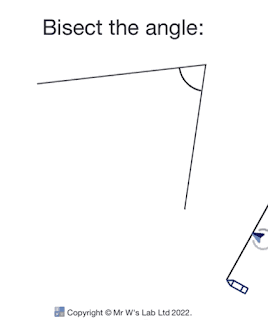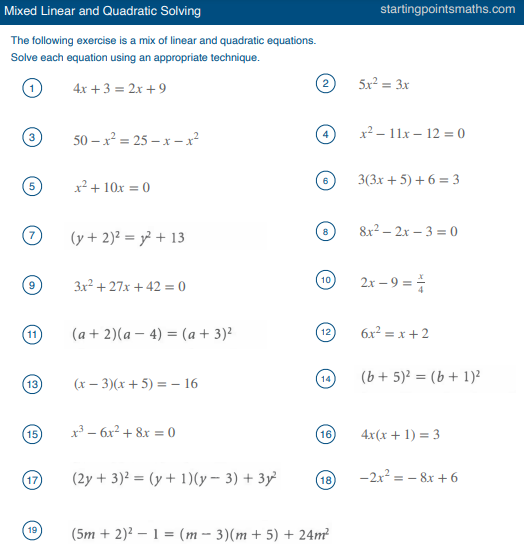 Welcome to my 164th gems post. This is where I share some of the latest news, ideas and resources for maths teachers.
Welcome to my 164th gems post. This is where I share some of the latest news, ideas and resources for maths teachers.
1. Worked Examples
@JakeGMaths shared a large bank of worked examples. It’s free to use and contains over 400 examples. Each one is several slides long, guiding students through a method in a series of steps. Then there’s a printable part for the students to complete, then the solutions. The PowerPoint has clear instructions on how to use these resources in lessons. Here are a couple of examples of the student tasks:
If you haven’t yet read it, I recommend Michael Perhan’s excellent book Teaching Math with Examples which inspired this work.
Also check out Jake’s other projects which I blogged about in Gems 158.
2. Operations with Negative Indices
3. Gif Generator
@PiXLMattTheApp continues to develop his website with an incredible range of features. His latest addition is a gif creator which allows teachers to very easily create a recording of a modelled example.
4. Bearings
5. Starting Point Maths
Second, a task which has a mix of linear equations, quadratic equations, equations which look quadratic but are linear, and a sneaky cubic. Mixed Linear and Quadratic Equations is all about strategy selection, so students become better at spotting quadratics.
Update
At school we’ve all been unwell lately – it’s that time of year – and our Year 11s have been in mocks so we’ve been doing lots of invigilation, which is pretty dull. On a more positive note, I’ve been teaching some of my favourite topics: Year 7 have been learning about prime numbers which is always a joy, Year 8 have been solving equations, and Year 10 have been doing quadratics.
Here are some things you might have missed:
- The MA is calling for submissions to lead a session at the joint subject associations conference next Easter. This two day conference at Warwick University will be the highlight of the year for maths teachers. If you’re an experienced teacher with something to share, please do consider speaking. I particularly encourage female speakers, who are always underrepresented at maths education conferences. Complete this form by the end of November to offer a session.
- Realising my Equating Coefficients in Identities task ramped up in difficulty too quickly, I made a revised version of this resource which is shared on TES.
- @MrDraperMaths wrote an excellent post about transformations of functions which featured a really interesting approach that had never occurred to me before.
- @sxpmaths shared an excellent summary of the different sampling techniques covered in A level maths.
- @missradders shared a lovely Teacher Treasure Hunt that could be used during Maths Week.
- Everyone loves the classic Standards Unit resources from the legend Malcom Swan. The ‘Traffic’ program was originally written in Java as part of the Standards Unit but @MathsTechnology has recreated it in GeoGebra.
- @nathanday314 shared some of his excellent starter activities plus a thread that explains how he uses them. The thread is well worth a read.
- @draustinmaths continued to add new resources to draustinmaths.com, including this new task on forming quadratics which I’ve added to my resource library.
- The wonderful mathematical magazine Chalkdust published Issue 16 – you can read it online or order a paper copy.
- Did you catch my recent blog posts? I wrote a methods post called ‘Easy Multiples‘ and I wrote ‘Some Things We’ve Tried‘ where I described some of the things I’ve been up to at school since I became Head of Maths.
- La Salle shared the dates and locations of its next three in-person conferences:
Four takes on how to teach/discover/prove/understand summing the terms of a geometric sequence. pic.twitter.com/TaYTITpaWF
— William Rose (@dodecahedra) November 11, 2022













